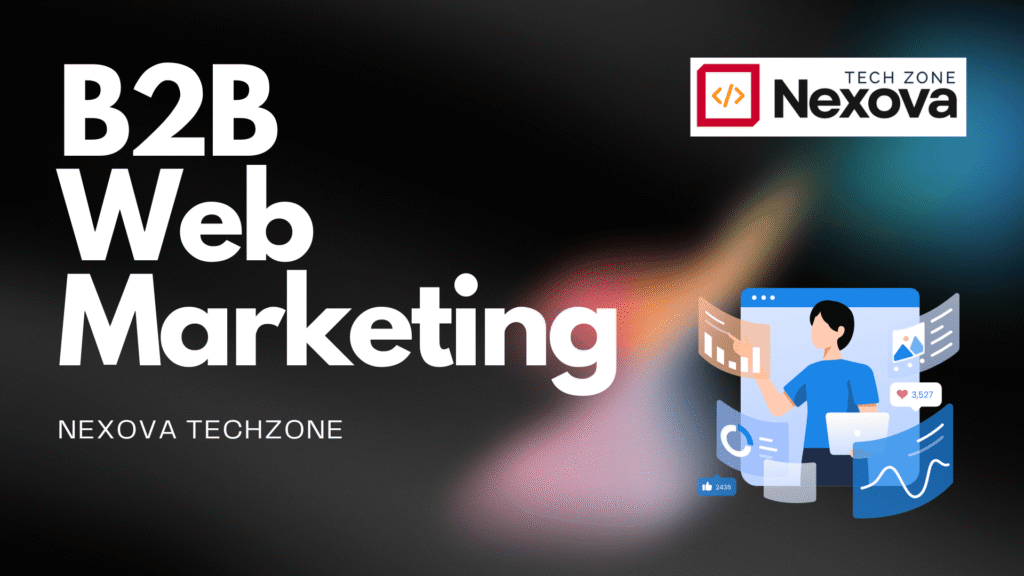In 2025, B2B buyers are more digital than ever. They research online, compare vendors, and expect instant access to useful content before even speaking to a sales rep. That’s why B2B web marketing has become a critical part of modern business strategy.
Whether you’re a growing startup or an established firm, understanding how to market your services to other businesses online is essential. This guide covers what B2B web marketing includes, how it works, top trends, best practices, and why it matters more than ever.
What Is B2B Web Marketing?
B2B web marketing is the practice of promoting your products or services to other businesses using digital channels like websites, content, SEO, email, and social media. Unlike B2C marketing, which focuses on fast, emotional purchases, B2B marketing is logic-driven and targets decision-makers like CEOs, managers, and procurement teams.
These buyers take time to evaluate options and look for solutions that offer long-term value and measurable ROI. That’s why your online presence must do more than attract — it needs to educate and build trust.

What Does a B2B Web Marketing Strategy Include?
The core of your strategy starts with a strong website. Your site should clearly explain what you do, who you help, and why you’re the best choice. It must be mobile-friendly, load fast, and make it easy for users to take action, whether that’s booking a demo or requesting a quote.
Next is content marketing. High-quality blog posts, videos, and case studies help position your business as an industry expert. This content also improves your visibility on search engines when combined with a solid SEO strategy — targeting keywords your ideal customers are searching for.
Email marketing helps keep leads engaged after their first visit. Through automated drip campaigns and newsletters, you can deliver relevant content that moves them closer to a decision.
Paid advertising on platforms like Google and LinkedIn allows you to target decision-makers directly. You can tailor your ads by industry, job title, or company size to reach the right people at the right time.
And yes — social media plays a growing role in B2B too. LinkedIn, especially, is a powerful channel for sharing industry insights, success stories, and expert content that builds credibility.
To track results, use tools like Google Analytics and HubSpot to measure how users interact with your site, which content converts best, and where to improve.
What Makes a Winning B2B Web Strategy?
Here are the essentials:
- A clear, user-friendly website that builds trust
- Helpful, SEO-driven content for every buyer stage
- Strategic email campaigns to nurture leads
- Paid ads targeting high-value decision-makers
- Social media to build credibility
- Analytics to measure performance and optimize continuously
Best Practices for 2025
The B2B space is competitive, so it’s important to focus on what works. First, map your content to the buyer journey — create material for people just learning about their problem, considering solutions, and ready to choose a provider.
Build trust early using real client testimonials, case studies, certifications, and team bios. Buyers want to work with providers who are transparent, capable, and relatable.
Don’t try to speak to everyone. Tailor your message to a specific industry or audience type — the more targeted you are, the more likely your message will resonate. Also, don’t forget speed matters. When a new lead comes in, respond quickly — tools like CRM automation help ensure nothing slips through.
Learn more: Inbound marketing – Wikipedia
Trends Shaping B2B Marketing in 2025
One of the biggest shifts is the rise of AI-powered personalization. Today’s tools can adjust website content, email messages, and product suggestions based on user behavior, making your marketing more relevant and effective.
Account-Based Marketing (ABM) is another growing trend. Instead of marketing to broad audiences, you focus on specific high-value companies with personalized campaigns.
Video is also on the rise. Businesses are using short explainer videos, product walkthroughs, and customer testimonials to build trust and simplify complex ideas.
Finally, with stricter data regulations, privacy-first marketing is essential. Be transparent with how you collect and use data — this builds credibility and protects your brand long-term.
Key B2B Marketing Stats
To highlight the power of web marketing:
- 89% of B2B buyers start their journey with a web search.
- 74% of decision-makers prefer researching online before talking to a sales rep.
- 60% of marketers say content brings the highest-quality leads.
- LinkedIn generates over 80% of B2B social media leads.
Final Thoughts
B2B web marketing is no longer optional — it’s the new engine for business growth. When done right, it helps you get found, earn trust, and convert leads into long-term clients. Whether you’re new to digital or looking to improve results, the key is to focus on clear messaging, helpful content, fast follow-ups, and continuous improvement.
If your website isn’t attracting the right traffic or converting visitors, it might be time to rethink your digital strategy. In a world where business begins online, let your web presence do the work — and watch the right clients come to you.
